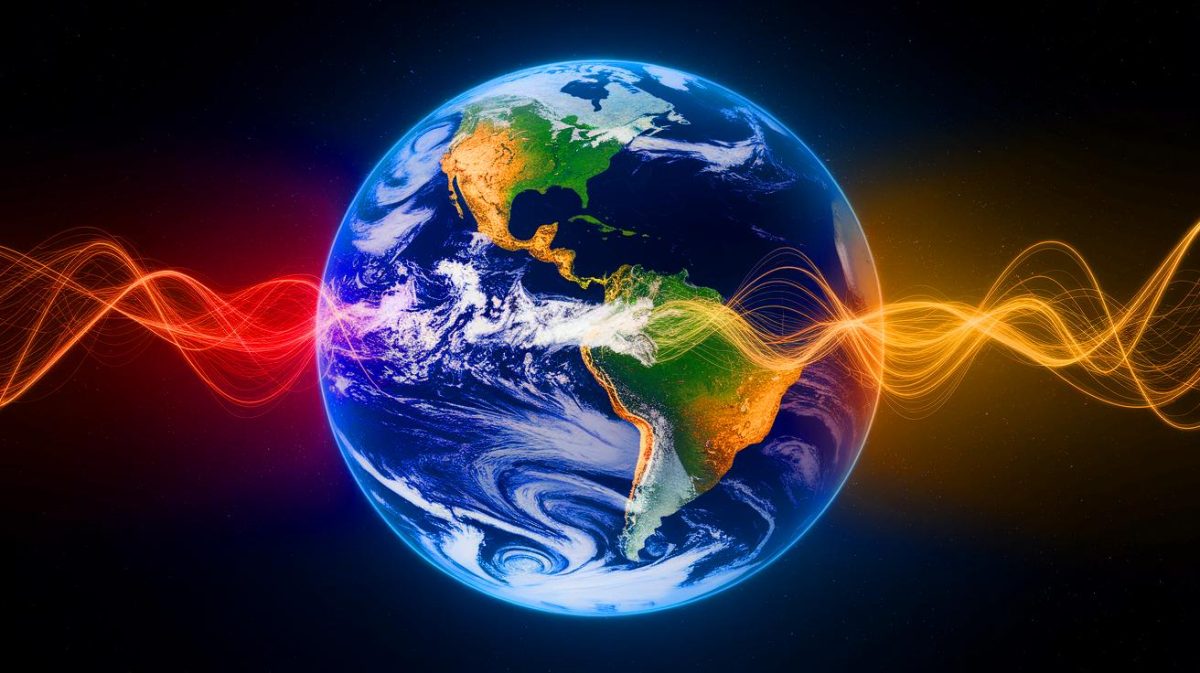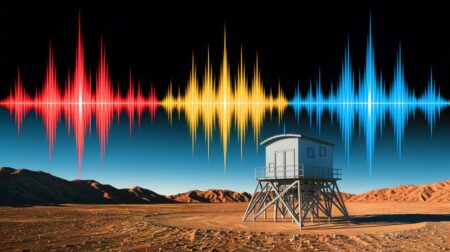| IN A NUTSHELL |
|
The South Atlantic Anomaly (SAA) is a vast region of weakness in the Earth’s magnetic field that has captivated the attention of scientists at NASA. Positioned over South America and the South Atlantic Ocean, this expanding disturbance, originating from deep within our planet, poses increased risks to our space technologies. As this anomaly grows, understanding its origins and potential impact becomes crucial for safeguarding our satellites and deepening our comprehension of Earth’s inner workings.
Deep Origins and Complex Mechanisms
At the heart of NASA’s concerns lies the South Atlantic Anomaly (SAA), a geomagnetic phenomenon both fascinating and alarming. This immense region is marked by a significantly reduced magnetic intensity compared to surrounding areas. Far from being merely a scientific curiosity, this weakness acts as a breach in our natural protective shield, allowing high-energy solar particles to dangerously approach the Earth’s surface.
To understand the SAA, one must delve into the core of our planet. Its origin is intricately linked to the geodynamo, a complex process occurring in Earth’s outer core. Here, the movement of molten iron and nickel generates the magnetic field that envelops us. However, this generation is not uniform.
Scientists create heat-resistant super corals that could save entire marine ecosystems from collapse
Two primary factors contribute to the formation of the SAA. Firstly, the tilt of the Earth’s magnetic axis relative to its rotational axis plays a role. Secondly, the influence of a massive dense structure, known as the African Large Low Shear Velocity Province, located about 1,800 miles beneath the African continent, disrupts the magnetic field generation in this region. NASA geophysicists explain that the anomaly is also linked to a local polarity reversal within the Earth’s magnetic field, further weakening the overall dipole field intensity in this specific area. As Weijia Kuang from NASA’s Goddard Space Flight Center describes, a reversed polarity field has developed in the region, creating a sort of “pothole” in the Earth’s magnetic armor.
A Threat to Space Technology
This magnetic vulnerability is not without consequences. Satellites traversing the SAA are exposed to high levels of energetic protons. These particles can cause what engineers term single event upsets (SEUs). These incidents can lead to temporary malfunctions, data corruption, or even permanent damage if a critical system is affected.
Scientists create heat-resistant super corals that could save entire marine ecosystems from collapse
In response to this risk, many satellite operators take preventive measures, such as shutting down non-essential systems when passing through the anomaly. Even the International Space Station (ISS) crosses the SAA on each orbit. While its shielding effectively protects the astronauts, external instruments are more exposed. Bryan Blair, deputy principal investigator for the GEDI (Global Ecosystem Dynamics Investigation) instrument on the ISS, reports occasional “glitches” and resets, resulting in a few hours of data loss each month, a manageable impact. Other missions, like the Ionospheric Connection Explorer (ICON), also closely monitor the SAA and adjust their operations accordingly.
Far from being static, the South Atlantic Anomaly is a dynamic phenomenon. Recent data, particularly from the ESA’s Swarm constellation and historical measurements from NASA’s SAMPEX mission, confirm several alarming trends. The anomaly is slowly drifting northwest, expanding in surface area, and, notably observed since 2020, is beginning to split into two distinct lobes, creating two centers of minimum magnetic intensity.
This bifurcation, corroborated by various studies, increases the number of hazardous zones for spacecraft and complicates the task of scientists developing predictive models of geomagnetic conditions. Understanding the changing morphology of the SAA is crucial for the safety of current and future satellites, emphasizes Terry Sabaka of NASA.
Anticipating the Invisible
To refine their understanding and predictions, NASA combines satellite data with simulations of Earth’s core dynamics. These inputs feed global models like the International Geomagnetic Reference Field (IGRF), which tracks the evolution of the Earth’s magnetic field. These models are essential not only for planning space missions but also for gaining a better grasp of our planet’s internal structure. The approach resembles weather forecasting but on much longer timescales, allowing scientists to estimate the secular variation, the slow yet persistent changes in the magnetic field over years and decades.
While the current evolution of the SAA is unprecedented in the space era, geological records suggest that such anomalies are not exceptional over long timescales. A 2020 study even suggests that similar anomalies may have existed 11 million years ago. It is important to note that, according to scientists, the current SAA is not an early indicator of a magnetic pole reversal, a natural but rare phenomenon occurring over hundreds of thousands of years. Thus, studying the SAA remains a vital research area, crucial for protecting our orbiting technologies and deepening our understanding of the profound forces driving our planet.
As the South Atlantic Anomaly continues to evolve, the scientific community remains vigilant in its efforts to understand and mitigate its impact. With its potential to disrupt satellite operations and influence our understanding of Earth’s magnetic field, the SAA poses intriguing questions about the future of our planet’s magnetic dynamics. How will these changes shape our technological and scientific pursuits in the years to come?
Did you like it? 4.4/5 (22)









Wow, this sounds like something out of a sci-fi movie! Are we sure it’s not aliens? 👽